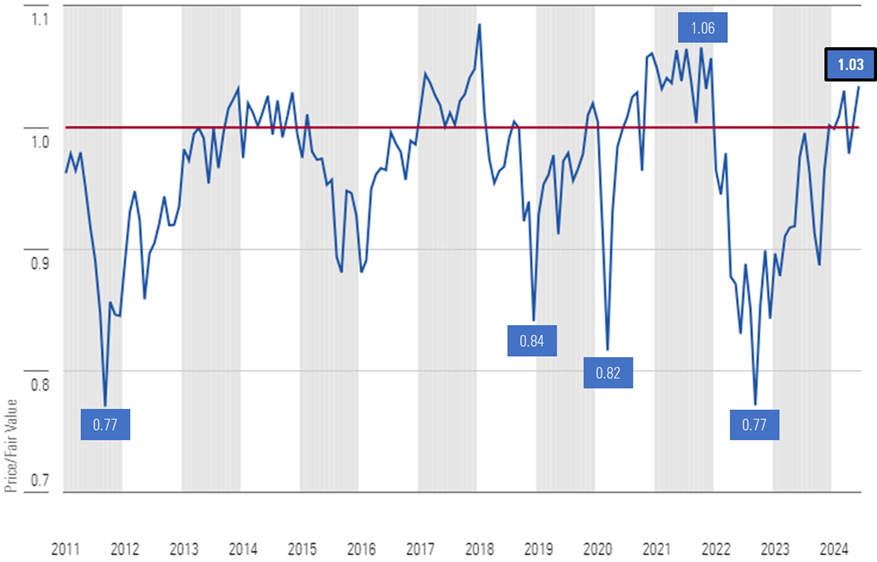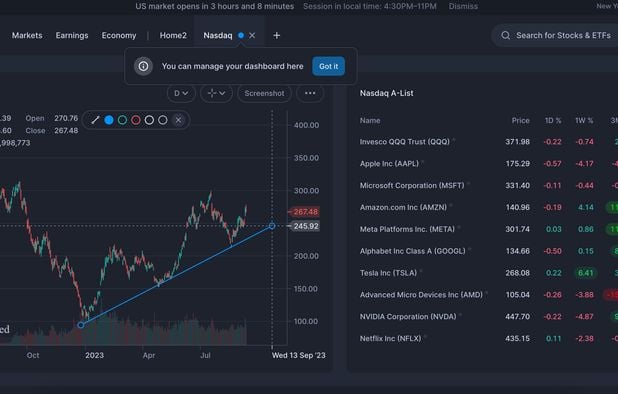20 Recommended Facts On Picking AI Stock Trading Analysis Sites
Wiki Article
Top 10 Suggestions For Evaluating The Cost And Pricing Of Ai Trading Platforms For Stocks
To ensure you achieve the highest value it is essential to evaluate and price AI stock predicting/analyzing platforms. Understanding the pricing structure is important for making an informed choice. These are the top ten suggestions for evaluating cost and pricing:
1. Understanding the Pricing Model
Subscription-based: Find out if the platform charges an annual or monthly fee and what features are available on each level.
Pay-per-use : Verify that the platform charges according to the amount of usage (e.g. requests for trades, for information or forecasts).
Freemium model: Check whether the platform has a free tier with only a few features, and charges for premium features.
2. Compare Pricing Tiers
Compare which features are included in each pricing level.
Scalability: Ensure the pricing tiers are in line to your requirements, regardless of whether you're a trader on your own, a professional, or an institutional member.
Upgrade flexibility: Find out if you are able to easily upgrade or downgrade as your requirements evolve.
3. Evaluate Hidden Costs
Data charges: Find out whether there are additional fees for data that is premium (e.g. live data, or advanced analytics).
Brokerage Fees: Determine whether your brokering platform charges additional costs for trade execution or integration.
API usage: Determine whether API access costs are higher or if API usage is very frequent.
4. Try out demos for free and trial versions
Trial period: Try platforms that give you a no-cost demo or trial to try out their features.
Limitations of the trial: Make sure that it is inclusive of all features or if there are limitations regarding the functionality.
There are no-commitment options. Ensure that you have the option to cancel your trial without incurring any charges when the program doesn't satisfy your needs.
5. Find out about discounts and promotions.
Discounts on annual subscriptions The monthly plan is compared against the annual plan.
Referral programs: Find out if the platform provides discounts or credit for referring other users.
Inquire about institutional or bulk pricing if your company is large.
6. Review the Return on the investment
Value and cost: Examine the cost of a platform versus its features. For instance, does it, help you to make better trade decisions or help you save time.
Study the platform's success rates, or testimonials from users to gauge its potential ROI.
Alternative costs - Compare the platform's price with the cost that could be incurred if you don't use it (e.g., missed opportunity, time spent on manual analysis).
Review Cancellation Policies
Cancellation Terms: You may cancel your contract without any hidden fees or penalties.
Refund policy: Make sure to check whether the platform allows refunds on unused parts of your subscription.
Auto-renewal : Find out if your subscription is automatically renewed by the platform and discover how to cancel it.
8. Examine Pricing Transparency
A clear pricing page Check that the platform offers a pricing page which is detailed, clear and doesn't include any hidden charges.
Customer service: If you have any queries regarding prices or additional costs you can contact customer service.
Contract Terms: Go through the contract's terms to find out the existence of penalties or obligations over the long term.
9. Compare to Competitors
Comparing features: Ensure you are getting the best price and platform by comparing it with its competitors.
User reviews: Read the feedback of users to determine if the platform's cost is worth it.
Market positioning: Take a look at the pricing and decide if you are receiving a service that is compatible with your needs.
10. Calculate the Long-Term Costs
Price increases: Take a look at the past history of the platform and note how often it raises prices.
Features that are added: Find out whether your current plan has new features or requires an upgrade.
Costs for scaling - Ensure that the cost of your platform is affordable, even if your data or trading requirements increase.
Bonus Tips
Try a variety of platforms. Examine the performance and value of multiple platforms by testing their capabilities during free trials.
Offer prices to negotiate: If you have a large number of customers or belong to an organization, request special pricing and discounts.
Consider checking for educational sources. A lot of platforms offer free tools or educational materials that can be an excellent addition to the features they already have.
If you follow these guidelines to evaluate the price and cost of AI stock predicting/analyzing trading platforms make sure you select one that fits your budget and provides the features and performance you need. A well-balanced platform will give you the most efficient of both: affordability and functionality. Follow the best ai for investment recommendations for more advice including ai for trading, ai trade, ai trading, best ai stock trading bot free, using ai to trade stocks, investing ai, best ai trading app, ai for stock predictions, ai chart analysis, market ai and more.

Top 10 Tips On How To Evaluate The Scalability Ai Trading Platforms
Scalability is a key factor in determining whether AI-driven platforms that predict stock prices and trading are able to handle increasing user demand, markets and data volumes. These are the top 10 ways to assess scalability:
1. Evaluate Data Handling Capacity
Tip : Find out if the platform has the ability to analyze and process large databases.
Why is that? Scalable platforms must be able handle growing amounts of data with no reduction.
2. Test the Real-Time Processing Capabilities
TIP: Examine the ability of the platform to process real-time information streams, like live stock prices, or breaking news stories.
What is the reason? The importance of real-time analysis is to make trading decisions. delays can lead to miss opportunities.
3. Check Cloud Infrastructure and Elasticity
Tips: Make sure that your cloud platform (e.g. AWS, Google Cloud or Azure) and is able to dynamically scale resources.
Why? Cloud platforms are flexible, and they can be scaled up and down according to demands.
4. Algorithm Efficiency
Tip 1: Analyze the computational efficiency of the AI models that are being utilized (e.g. reinforcement learning deep learning, etc.).
The reason is that complex algorithms can be resource-intensive. Optimizing them so that they make them scalable is important.
5. Learn about Parallel Processing and Distributed Computer Systems.
Tip: Check if the platform leverages parallel processing or distributed computing frameworks (e.g., Apache Spark, Hadoop).
What's the reason? These technologies provide faster data analysis and processing on multiple nodes.
Examine API Integration. API Integration.
Tips: Make sure to check the integration of the platform to external APIs.
What's the reason? Seamless integration with platforms makes sure it is able to adjust to new data sources or trading environment.
7. Analyze User Load Handling
Make use of a high-traffic simulation in order to see how the platform responds when under stress.
The reason: The performance of a platform that is scalable shouldn't be affected by the growth of users.
8. Examine the model's retraining capabilities and the model's adaptability
Tips: Find out how frequently and efficiently the AI models are trained using new data.
Why: As markets change the models need to be updated quickly to remain accurate.
9. Examine for fault tolerance and Redundancy
Tips. Make sure that your platform is equipped with failover systems and redundancy for hardware orsoftware failures.
Why is that downtime in trading can be costly, so the ability to tolerate faults is essential for the scalability.
10. Monitor Cost Efficiency
Tip: Consider the cost of scaling your platform. Take into account cloud resources such as data storage and computing power.
Why? Scalability should come at a price that is viable. This means that you must balance performance against expense.
Bonus Tip Future-Proofing
Platforms should be designed to integrate emerging technologies, such as quantum computing as well as advanced NLP. They should also be able to adapt to changes in regulation.
If you focus on these aspects it is possible to evaluate the scalability of AI stock prediction and trading platforms. This will ensure they're robust, effective, and ready for future growth. See the most popular inciteai.com AI stock app for site info including ai trading tool, ai stock investing, ai stock price prediction, best ai trading platform, ai options trading, ai for trading stocks, best ai for stock trading, ai tools for trading, chart ai trading, invest ai and more.
